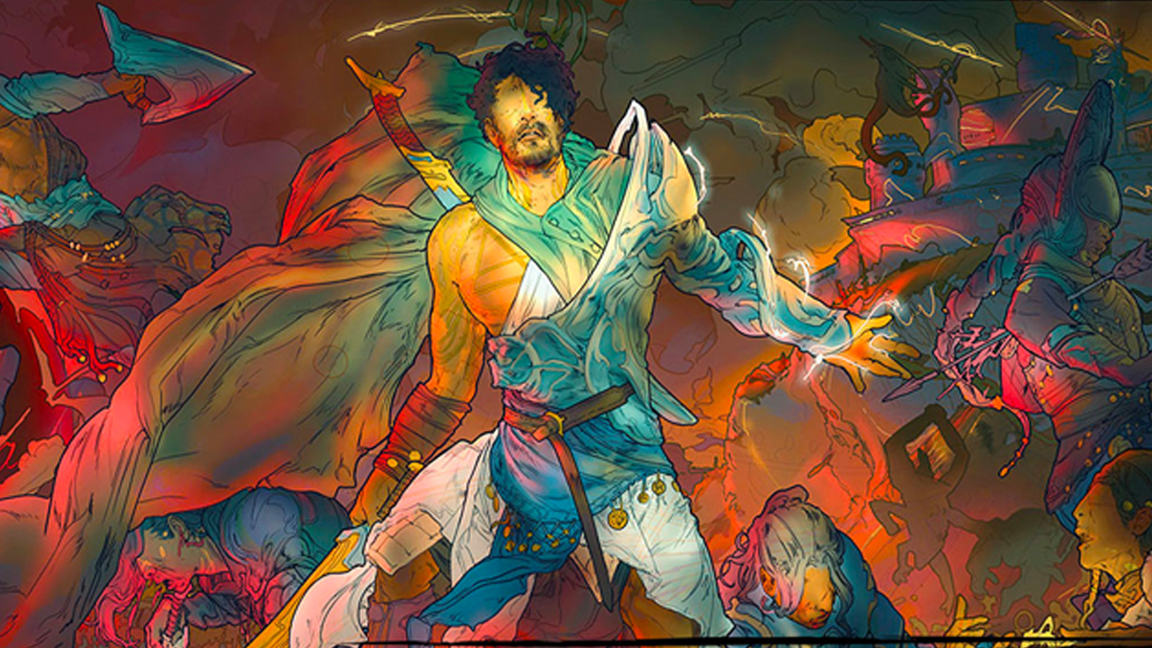
I just love the art style being embraced for the upcoming video game Songs of Silence from developer Chimera Entertainment. It's not simply because the art team has adopted the aesthetic of Art Nouveau, one of the most influential art styles, but how it's being implemented; from the exceptional line art to vibrant colour palettes Songs of Silence feels like an Alphonse Mucha painting in motion, with a mediaeval fantasy spin.
It's a "risk" says art director Christian Dreher in my interview below, and one he describes as perhaps being "hit or miss" with gamers. Personally, I'm on board with Songs of Silence's art style because the team has fully embraced the aesthetic. More developers should take risks, it's how gaming evolves.
As concept artist Katharina Brand explains below, embracing the Art Nouveau style isn't easy for video games either; it's hard, tricky and challenging to get this look right in a 3D scene, particularly with beautifully animated, tiny hoards of warriors and fantastical creatures roaming the battlefield.
Songs of Silence is a forthcoming game for PC and games consoles that enables you to manage kingdoms, command armies and explore a complex and beautiful world. It promises a unique blend of turn-based gameplay and real-time battles, all wrapped in a graceful Art Nouveau art direction (and a soundtrack by Final Fantasy Tactics and Final Fantasy XII composer Hitoshi Sakimoto).
Discover more at the Songs of Silence website and read my interview below to get a better understanding why I think the risk will pay off with Songs of Silence. If you want to read more about crafting a game's art style, discover some key advice in our feature, 'how to find your tabletop RPG art style'.
Songs of Silence interview: creating the art
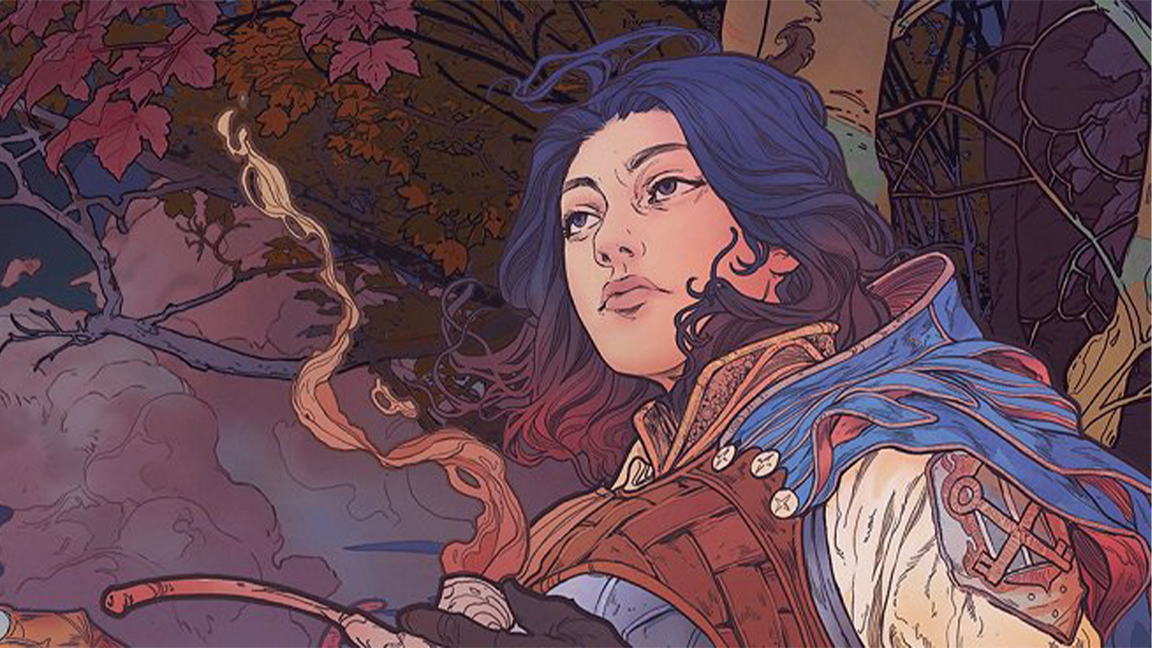
Why did you choose the Art Nouveau period as an influence?
Christian Dreher: "To us Art Nouveau - specifically the graphic works of Alphonse Mucha - felt like the perfect canvas to convey what we wanted to show: Beautifully handcrafted artworks telling small but interesting stories. Plus it gives Songs of Silence a very unique and individual personality."
Katharina Brand: "There really aren't many games out there with a similar style. I think the reason why is because it poses some specific challenges, most noticeably that this particular line art style is hard to pull off in 3D and even harder to animate close up. Because the game's camera perspective is quite zoomed out we were able to reduce the complexity of the Art Nouveau Style in 3D, while conveying Mucha's art style in more detail for the illustrations and UI."
What is it about Alphonse Mucha that appeals to you, and how does that influence the game's art?
Chris: "Mucha's illustrations have a great balance of being very sophisticated and elaborate while they are quite playful and accessible at the same time. This is one of the key aspects: most people like the appeal of Mucha's drawings - no matter if they like the depicted content. It's what makes people feel comfortable looking at the drawings.
"This is what we wanted to achieve: making players feel welcome and comfortable while still telling a deeply troubling story of war and conflict.
"The elegance and expressiveness of Mucha's works are simply stunning and his use of colours, detail and composition was way ahead of his time."
Katharina: "To me his work stands out as being masterfully done, aesthetic and moving illustrations that still feel quite modern despite their age. We tried to stick as close to this style while also trying to fit it into a medieval fantasy game setting, where some changes had to be made depending on the context. For example, we have also introduced some textures inspired by Gustav Klimt to the mix to help us add interest and detail to artworks more quickly."
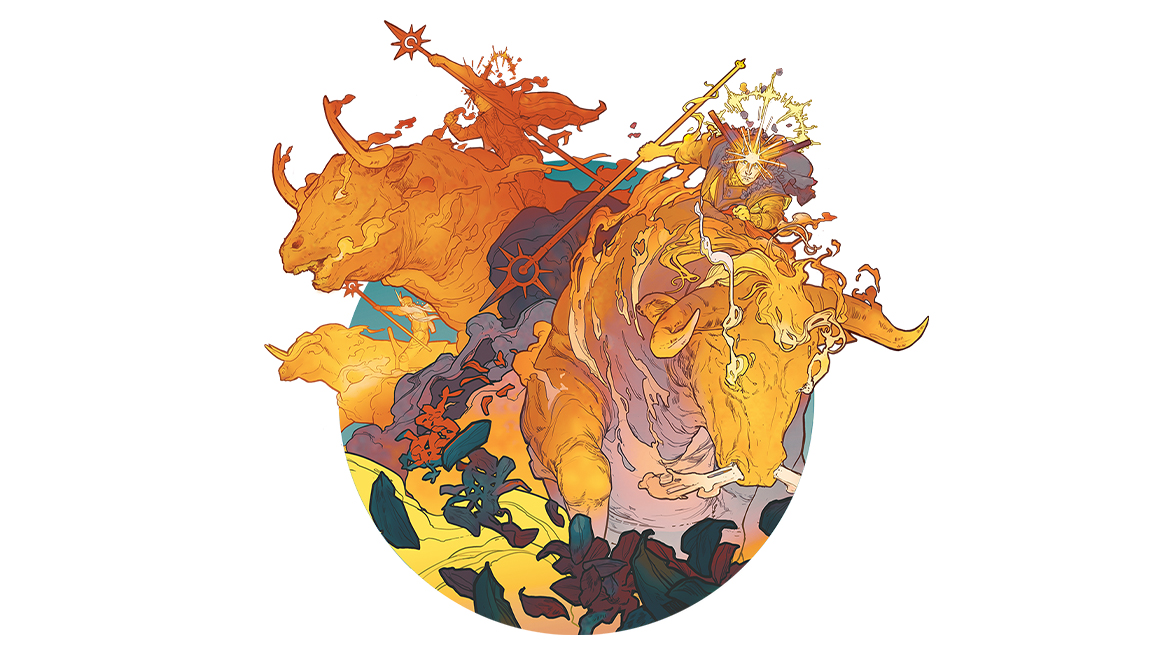
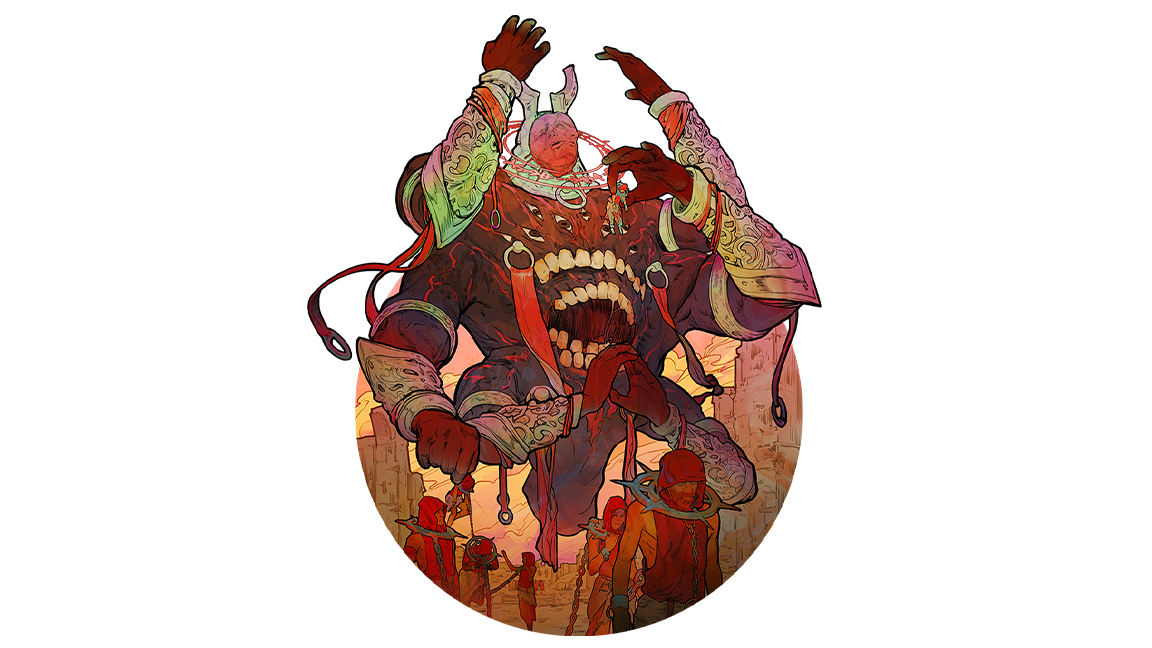
Was it important to buck the trend for fantasy games and add colour and vibrancy?
Chris: "Because we wanted to create something special and unique, it felt quite important to us to deviate from common roads. At the same time it's a huge risk entering a market with a game that differs quite a lot from the majority played by the big audience. It's either hit or miss."
Katharina: "A lot of our predecessors in terms of fantasy 4X games are quite realistic and grim which at this point is almost what fans of the genre expect. With our colour palette we were aiming to stand out and hopefully make the genre more appealing to a wider audience."
How did you make the beautiful illustrated maps in Songs of Silence?
Chris: "The map layouts have been created via splat maps - hand painted 'blue prints' of the map environments so to speak. There were a couple of painted pattern textures that we used for the map and battle terrain as well."
Katharina: "There are eight campaign maps, some even with two sides, one for the light and one for the dark world. There will also be a multiple of exclusive puzzle or multiplayer maps. It's hard to say how long this process takes since all departments work together to iterate on this pipeline since the beginning of development. Besides the artistic touches there's a lot of thought and play-testing that goes into the creation of them so it really depends on their individual challenges."
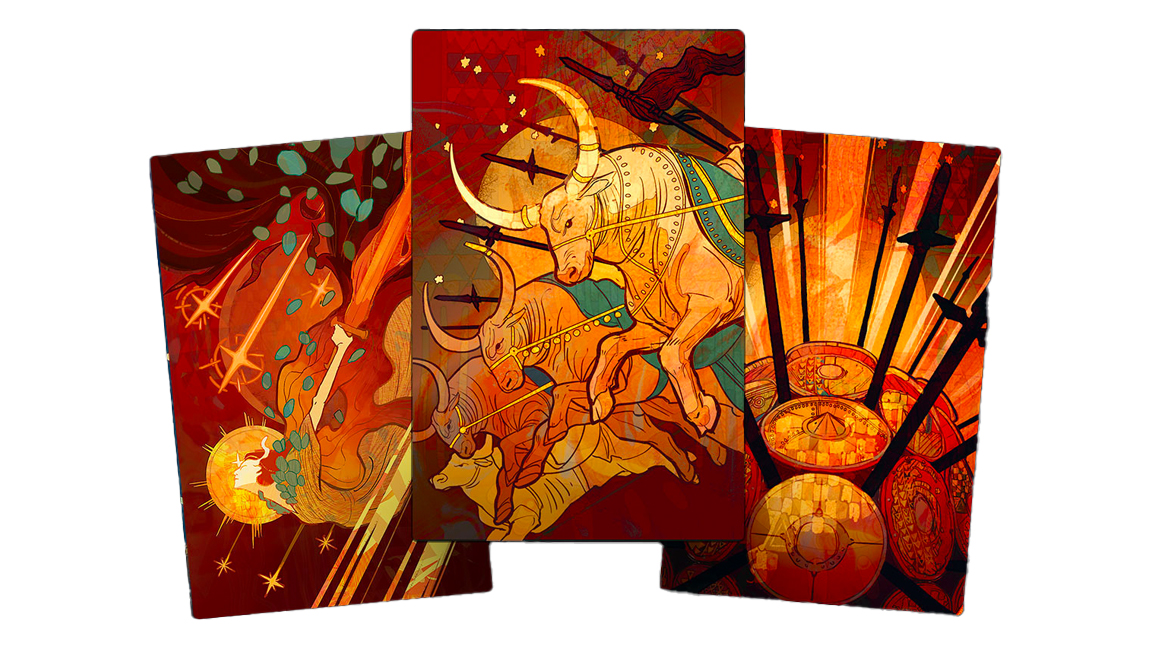
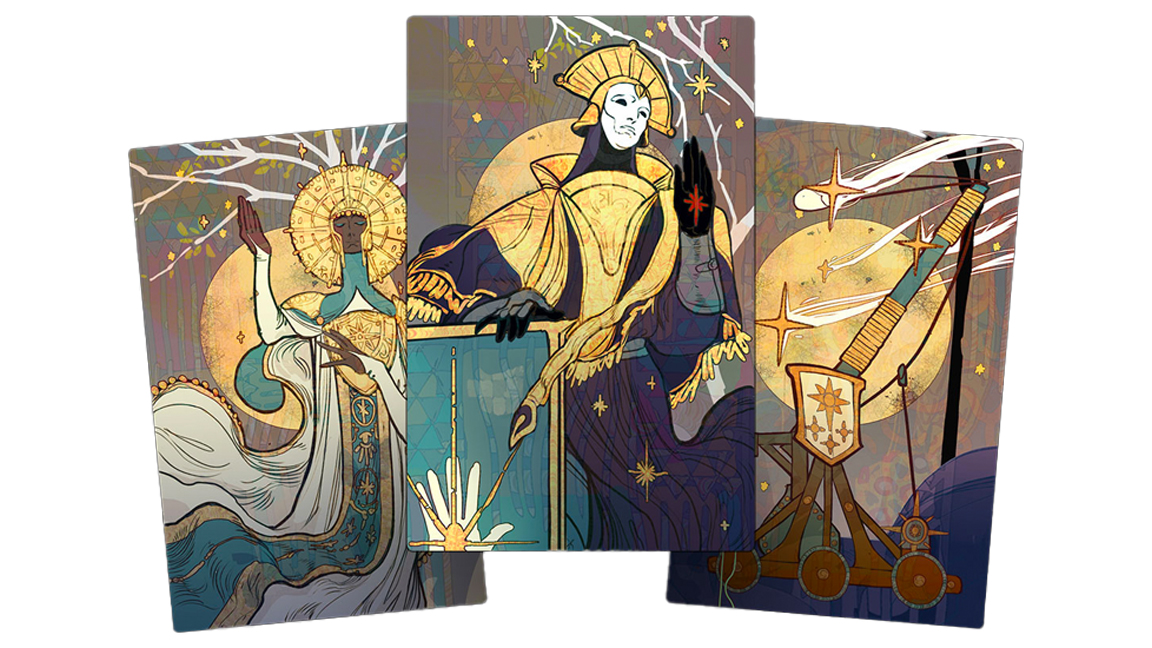
Do you have a favourite character or card design, and why?
Chris: "I really like Murnau. He's quite a guy. His design and background story turned out really well in my opinion. He embodies all the good and the evil in one person. There's no light without a shadow - a universal truth after all."
Katharina: "My personal favourite is the world scar. It's a giant stone golem with one arm that has quite a distinct shape design in my opinion. As a fan of the Shadow of the Colossus game this unit brings about the same nostalgia for these epic creatures for me."
Generally, what is the process for a character or unit design and creation?
Chris: "Usually the process starts with a briefing by a narrative or game designer. In most cases I ask for a rough doodle of what the narrative designer has in mind for the character. I do this because I get a better understanding of the idea and expectation of the writer, and eventually it'll help lowering the production time for the art asset.
"Since Songs of Silence is lore heavy, it was important to get the details right. There are quite some lore specific details we needed to convey, so a mutual agreement of the expected outcome was quite important to us.
"After the briefing a 2D artist starts drawing a bunch of simple greyscale silhouettes defining the general shape and rough details of the character.
"After one of the shapes has been approved, the artist starts working on a back and front view of the character in the scale of the battlefield as well as a slightly more realistically scaled version of this block out. The reason for this is, that we needed to derive two different assets from the visual base design - the less detailed and small 3D unit of the character as well as the more elaborate hand drawn unit portrait we needed for the user interface showing all the detail that we can't show on the 3d model due to it's limited size on the screen.
"Once both visual concepts have been approved, the less complex drawing goes to a 3D artist, who creates and textures a 3D model of the character according to the drawing. After this is done and approved, the model is handed over to the animator, who creates all of the needed animations for the unit, after properly rigging and skinning the 3D model. On a case by case basis a VFX artist is also needed to give the unit extra flair.
"The more detailed visual concept goes to a 2D artist, who will create the actual illustration for the unit."
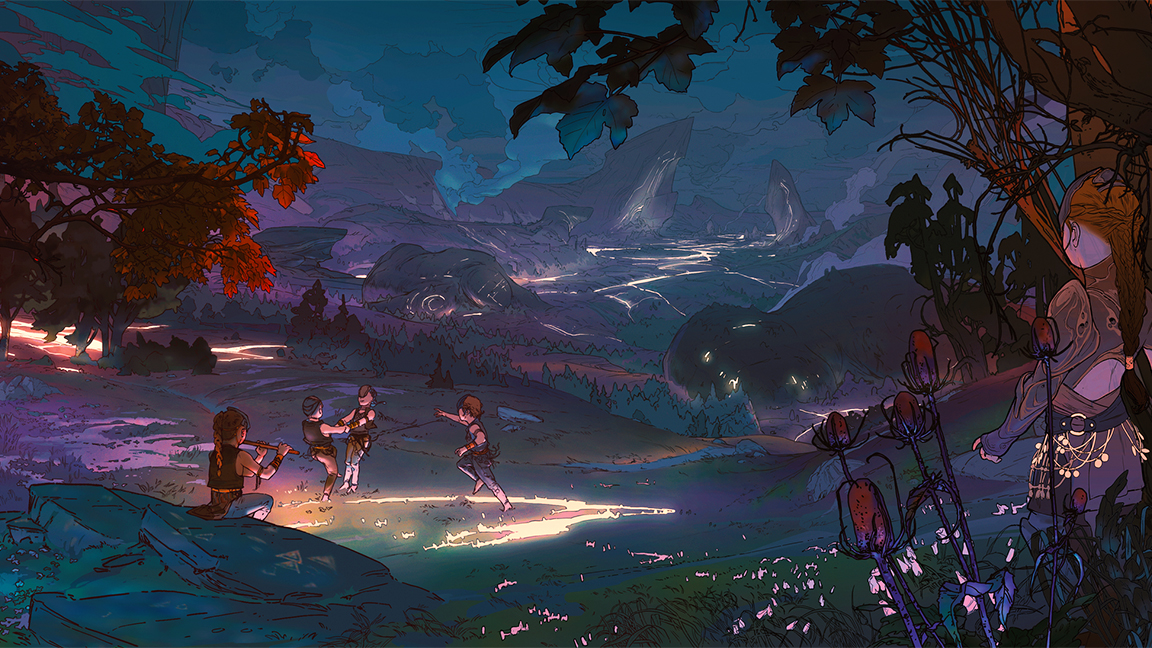
What software do you use, and is everything created digitally?
Chris: "All artworks and drawings have been created digitally. Usually we use Photoshop for the whole look development and illustration colouring, and Blender or 3D Coat to roughly block out the illustrations in 3D as a base for the line art.
"The character units were modelled in Blender and textured in Substance Painter as we wanted a fast and non-destructive process for unit texturing.
The terrain landscape for the map was created in Photoshop, Houdini, Gaea and Substance Designer."
Did you need to pair back the detail on the cards to make them work at a small size?
Chris: "The card illustrations have some hints of Art Nouveau but feel more "naive" and simple. Having limited space on the cards, we were looking for something less complex, well readable and comprehensible while still being beautiful and striking."
Katharina: "Art Nouveau appears differently on smaller sizes but technically still works the same. Besides reducing the detail there we also took inspiration from Gustav Klimt who was well known for his tragic and divine figures. That gave us an avenue to add a new twist to the playing cards that fits their fate-altering game mechanisms."
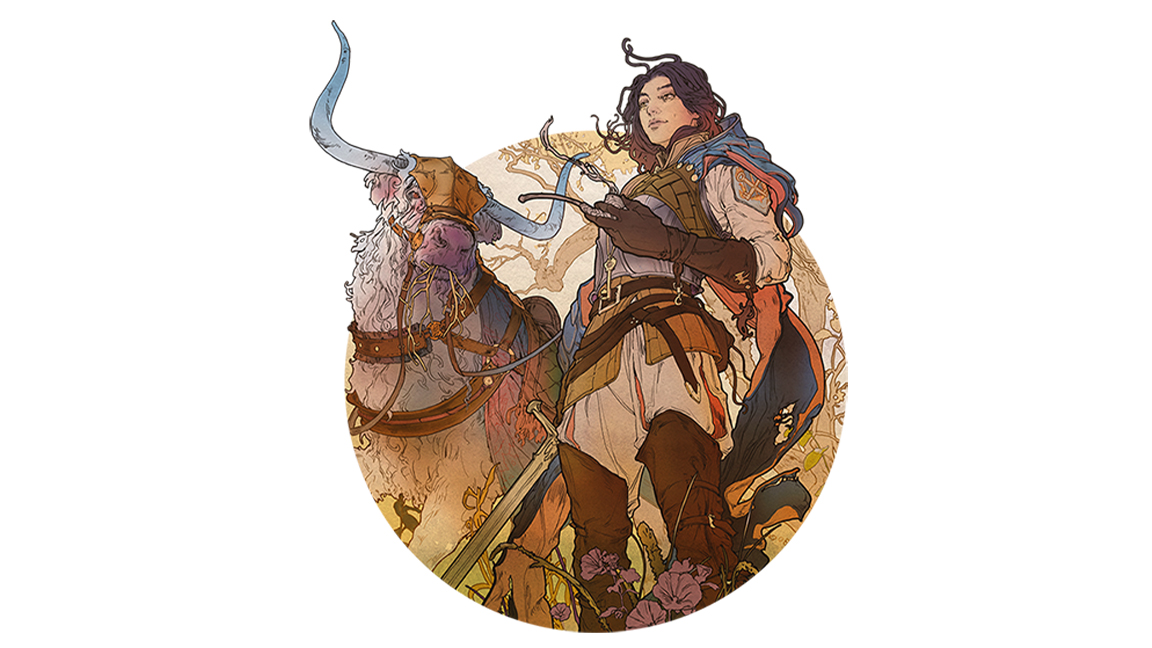
If you've been inspired by Songs of Silence and you're keen to get into video games, then we have some great features and advice for you. I'd recommend starting with a our collection of Photoshop tutorials and Procreate tutorials, as well as reading our explainers to Unreal Engine and Unity. We also have good round-ups of the best drawing tablets and the best digital art software to help get you started too.
Get the Creative Bloq Newsletter
Daily design news, reviews, how-tos and more, as picked by the editors.

Thank you for reading 5 articles this month* Join now for unlimited access
Enjoy your first month for just £1 / $1 / €1
*Read 5 free articles per month without a subscription

Join now for unlimited access
Try first month for just £1 / $1 / €1

Ian Dean is Editor, Digital Arts & 3D at Creative Bloq, and the former editor of many leading magazines. These titles included ImagineFX, 3D World and video game titles Play and Official PlayStation Magazine. Ian launched Xbox magazine X360 and edited PlayStation World. For Creative Bloq, Ian combines his experiences to bring the latest news on digital art, VFX and video games and tech, and in his spare time he doodles in Procreate, ArtRage, and Rebelle while finding time to play Xbox and PS5.
